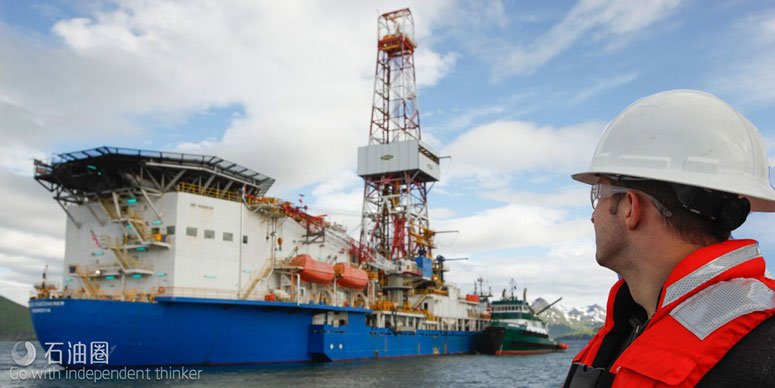Rigzone examines the possible long-term outlook for Mexico’s energy sector.
Mexico’s recent deepwater bidding round marked a major milestone for the country in its transformation of its energy sector. However, more work is needed to prepare Mexico and its state energy firm, Petroleos Mexicanos (PEMEX), for competition in the global oil market.
The success of Mexico’s Round 1.4 deepwater bidding compared with other Round 1 bids shows that major international oil companies were waiting for the right properties and fields to be bid out, Juan Francisco Torres Landa R., partner with the Mexico City office of law firm Hongan Lovells, told Rigzone. The award of fields to key global industry players in the deepwater round, and PEMEX’s farm-out agreement with BHP Billiton, would not have been possible a few years ago.
Both PEMEX and Mexican government officials deemed the deepwater auction process and results as a major success. However, government officials from 2013 to 2015 expressed a “naïve optimism” regarding the production and reserve replacement and short and mid-term impact of upstream reform. It wasn’t until last year that officials realized that the upstream auctions will have little effect on production and fiscal revenues during this decade, Adrian Lajous, a fellow with Columbia University’s SIPA Center on Global Energy Policy, stated in a Jan. 9 research paper on Mexico’s deepwater auctions.
“The compounding impact of low oil prices and falling oil production on public finance and particularly on the financial position of PEMEX has forced the oil industry to limit debt and drastically cut expenditures,” Lajous said. “The mid-term consequences of these constraints should not be underestimated.”
Despite president-elect Donald Trump’s controversial comments on building a wall along the U.S.-Mexico border and tough talk on immigration, Mexico still wants the United States investing in its energy sector, Antonio Garza, U.S. ambassador to Mexico during the George W. Bush Administration and now Counsel in the Mexico City office of the White & Case LLP, told Rigzone.
“The U.S. energy sector is too dynamic,” Garza said. “There is far too much strategic expertise and know-how not to want them involved. I think the response of Mexican leadership, the Mexican private sector and the Mexican people would [be that] the U.S. energy sector is best-in-class – of course, they’re welcome. Of course, we want them to participate.”
However, companies looking to invest in Mexico face some tough economic headwinds. Companies buying long are still preserving cash, Garza explained. From the standpoint of energy, it’s just going to take time to see where the energy sector and economy is over the year and early 2018.
“They’re still very cautious about major capital expenditures and to the extent that they’re going to be doing much with their capital expenditures, I think it’s going to be in domestic plays or plays where they’re already somewhat vested or have been active before.”
Still, U.S. energy companies are the best positioned proximate to this market.
What Could Be Next for Mexico’s Energy Sector
The outlook for Mexico’s energy sector could be impacted by the 2018 president elections and its regulatory regime.
It’s too early to tell what the outcome of Mexico’s 2018 presidential elections will be. But the mood in Mexico is that a left-wing presidency is more likely than ever, Duncan Wood, director of the Woodrow Wilson International Center for Scholars, told Rigzone. This shift is due to corruption scandals that have tarnished the image of current Mexican President Enrique Pena Nieto. Energy reform has also been unpopular in Mexico. Wood said he expected energy reform to become even more unpopular with the liberalization of gasoline prices in 2017, which would cause gas prices to rise.
Leftist candidate Andres Manuel Lopez Obrador has consistently opposed energy reform, Wood stated. Manuel believes in taking a more nationalistic approach to the energy sector.
“At the same time, he’s a pragmatist and actually understands the basics of the national economy and the need to attract investment,” Wood added.
Whoever succeeds Pena Nieto is also unlikely to have the votes in Congress to repeal the constitutional reform. But the new president could slow energy reform momentum by simply cancelling future bidding rounds, and taking steps to create a business climate less friendly for investment. Cancelling existing contracts would be difficult and costly for the Mexican government, as investors are protected by international and bilateral treaties, Wood said.
“It also would destroy confidence among investors,” Wood said. “I don’t see anybody taking that risk.”
Currently, the oil and gas industry and the government are both trying to ensure that Round 2 of bidding for exploration and production opportunities will be a bigger success and move forward in 2017. Given that the timing and sequencing of the Round 1 auctions has been severely affected by global oil industry conditions, Lajous argues that the Mexican government could have had better results by conducting a more rigorous selection of assets and a slower paced calendar could have offered better results under these circumstances.
“The institutional stress under which policy makers operated allowed little time to evaluate and more fully understand the results of each auction and pose alternative contractual options in the following ones,” Lajous stated. “The argument that they had no other options is mistaken.”
Mexico’s Oil and Gas Resources
Source: U.S. Energy Information Administration
• 2015 oil production averaged 2.3 million barrels per day, the lowest level since 1981
• Mexico had 9.7 billion barrels of proved oil reserves at year-end 2015
• Three-quarters of Mexico’s oil produced in the offshore Bay of Campeche
• Produce 1.4 trillion cubic feet(Tcf) of dry gas in 2015
• Had 15.3 Tcf of proved gas at year-end 2015, but is a net importer
• Technically recoverable shale gas resources estimated at 545 Tcf
One issue that Mexico needs to address is its regulatory capacity, Wood said. Wood believes that the Mexican government should focus not only on expanding the workforce of the nation’s energy regulatory agencies, but investing in regulatory processes as well. This investment will ensure that permitting takes less time, shortening the amount of time to first oil.
“This is to ensure agility and to make investors happy with the way their contracts are being applied,” Wood said. “If not, they’ll tell those stories to other investors, and other investors won’t come, and Mexico becomes less competitive.”
PEMEX Faces Further Challenges in Evolving for Competition
Mexico’s state energy firm PEMEX is on the right track long-term, but will continue to face challenges in 2017. PEMEX’s biggest challenge is its business culture, which still tends to think like a government agency rather than an oil company, Wood explained.
“What the government should have done was show that PEMEX is actually healthier and stronger at the beginning of the reform process,” Wood said. “But time has run out for the government to show that.”
PEMEX has dealt with international companies before, but it wasn’t really competing with those companies under the previous regulatory environment. Landa believes that PEMEX will need to significantly reduce its workforce if it wants to meet the margins that public companies will impose and new framework for the oil and gas industry.
“It’s a good idea to make sure that PEMEX is not a politically-driven company, but one where economic efficiency is a major driving force,” Landa said.
How long will it take for PEMEX to complete its evolution hinges on a number of factors? The current CEO has made good changes; but the president who will follow Pena Nieto will likely want to bring in a new PEMEX CEO, Wood said. If the current CEO remains, the meaningful changes within PEMEX will continue to impact its bottom line over the next five years. But if somebody comes in with a different plan, that could delay everything.
Wood predicts that PEMEX’s production will fall below 2 million barrels per day (MMbpd) over the next 12 to 18 months because of Mexico’s aging oil and gas fields. Optimistically, Mexico’s production will climb above 2 MMbpd in 2020. Wood thinks that production up 2 MMbpd is too ambitious, but between 2.5 MMbpd and 3 MMbpd.


 石油圈
石油圈
